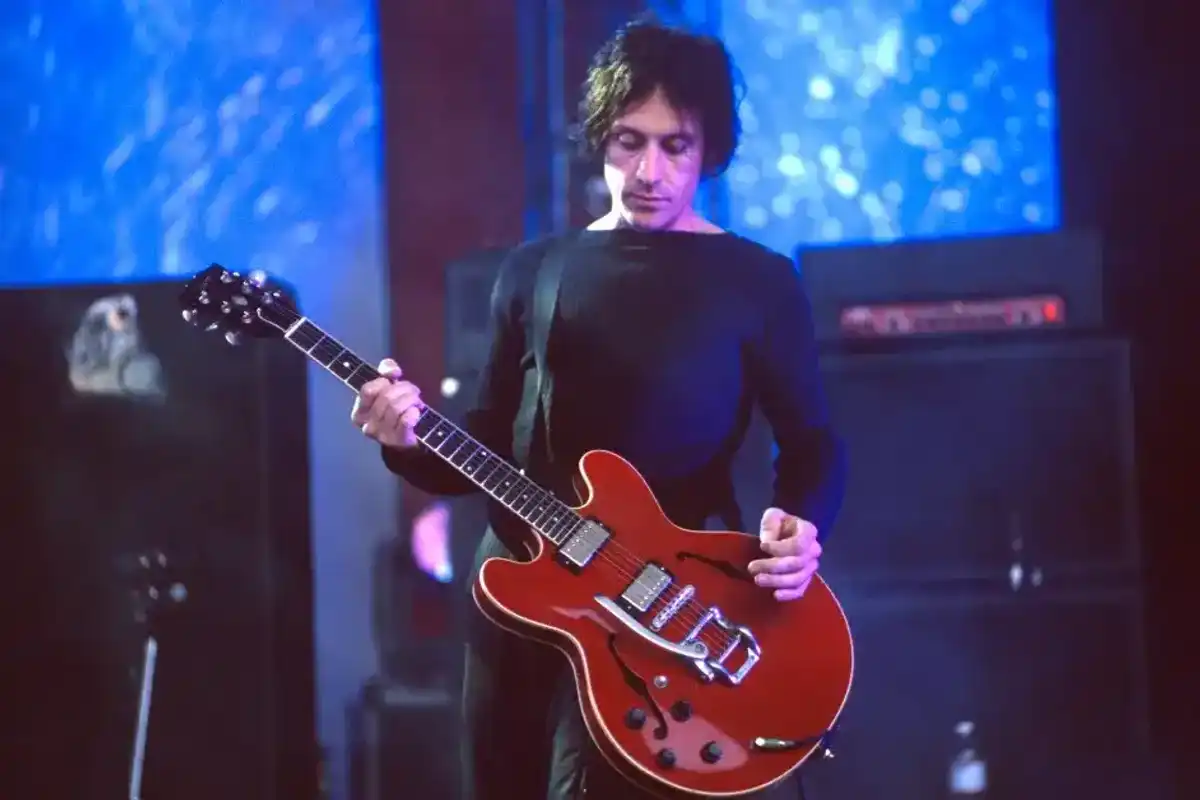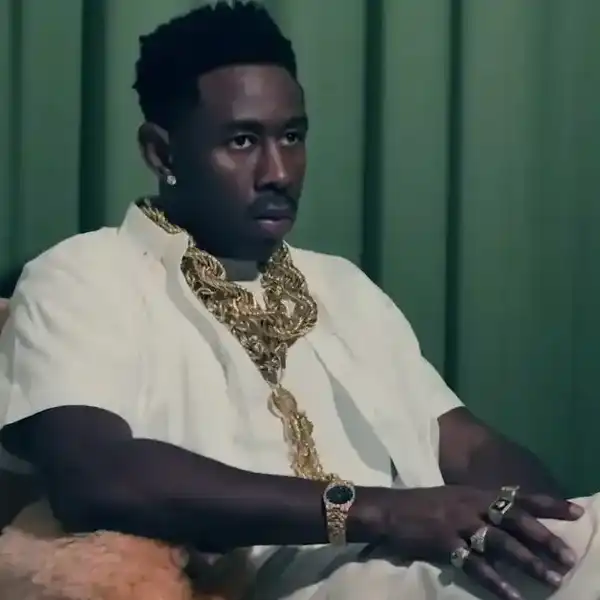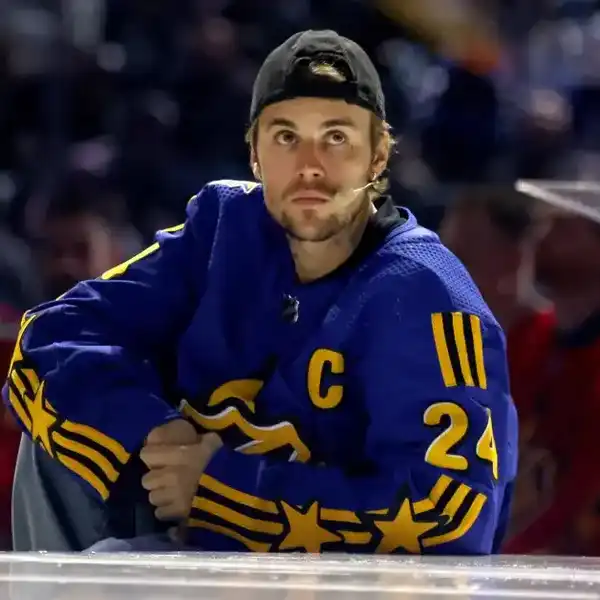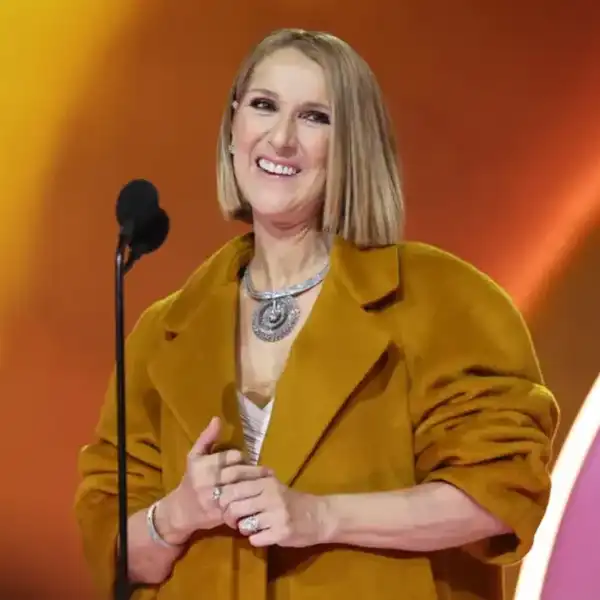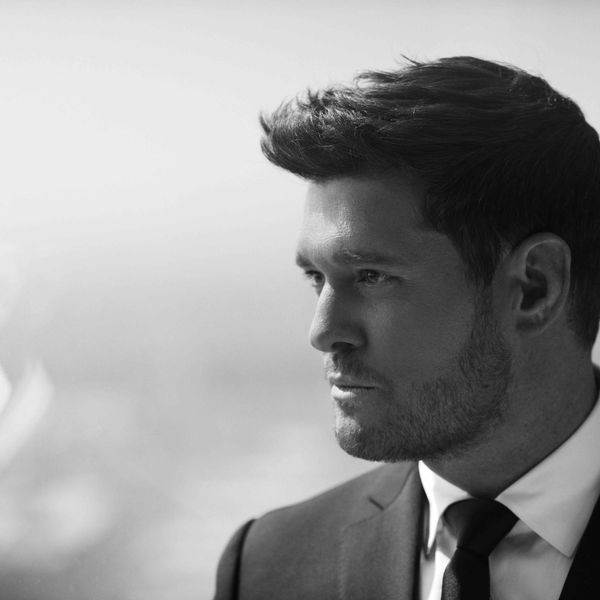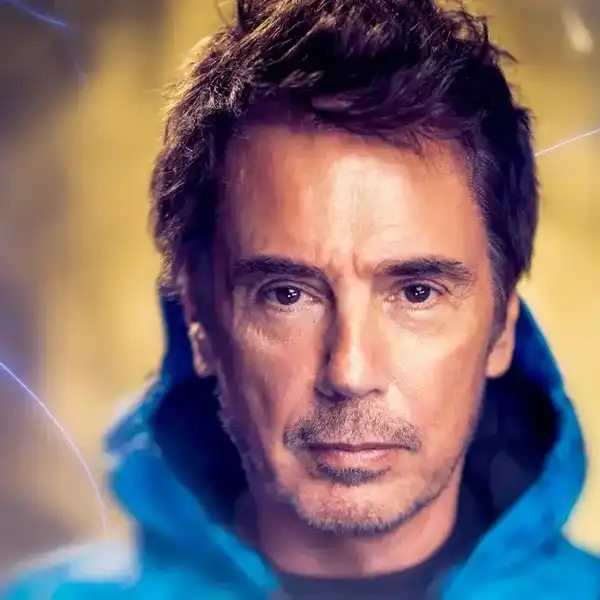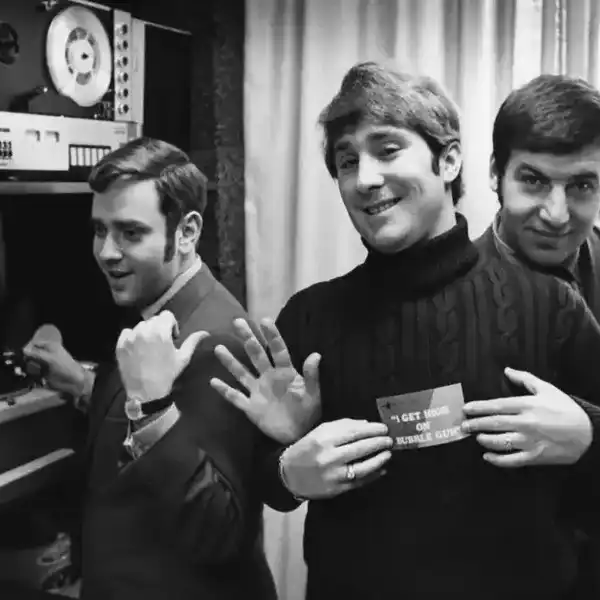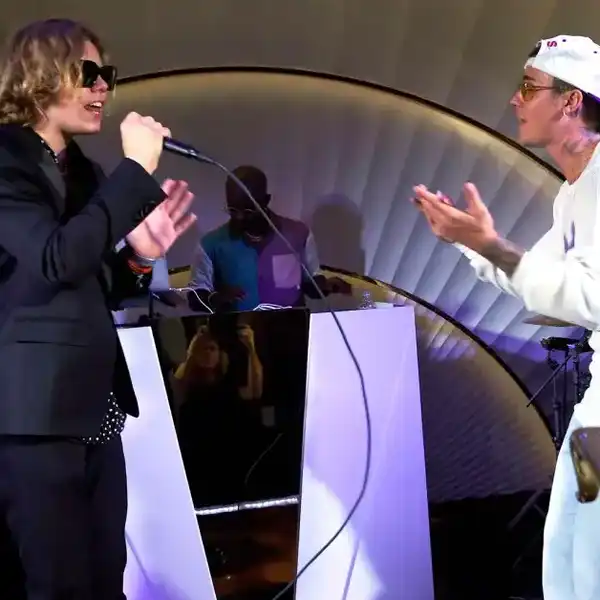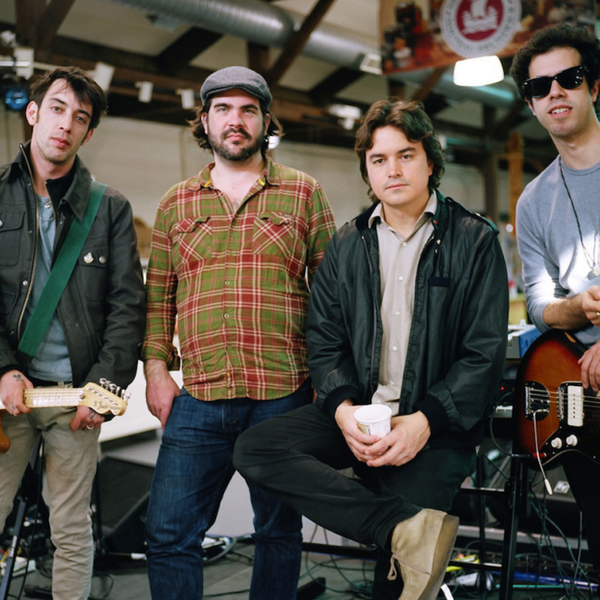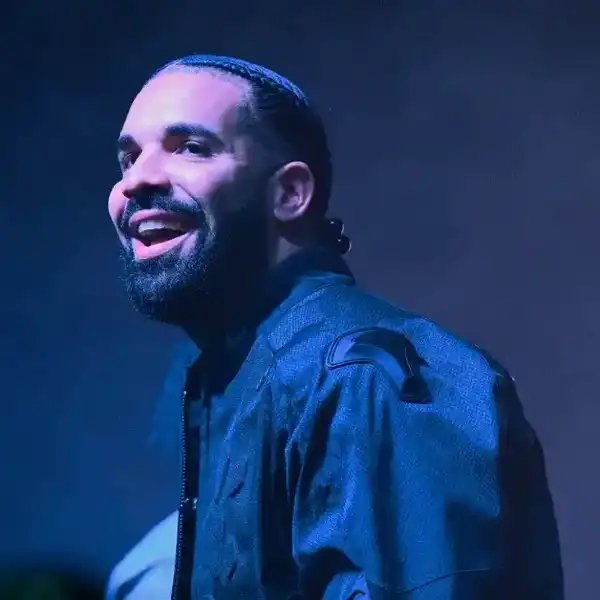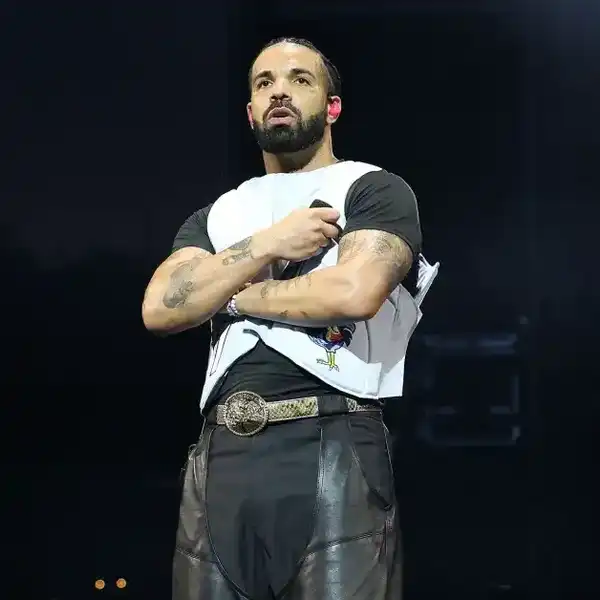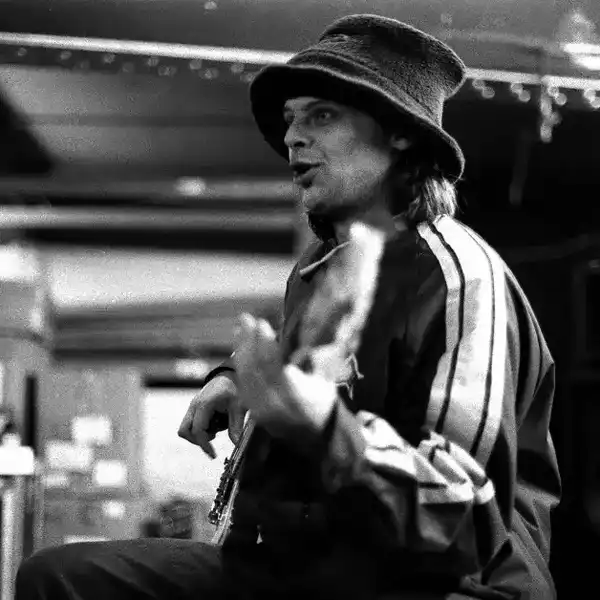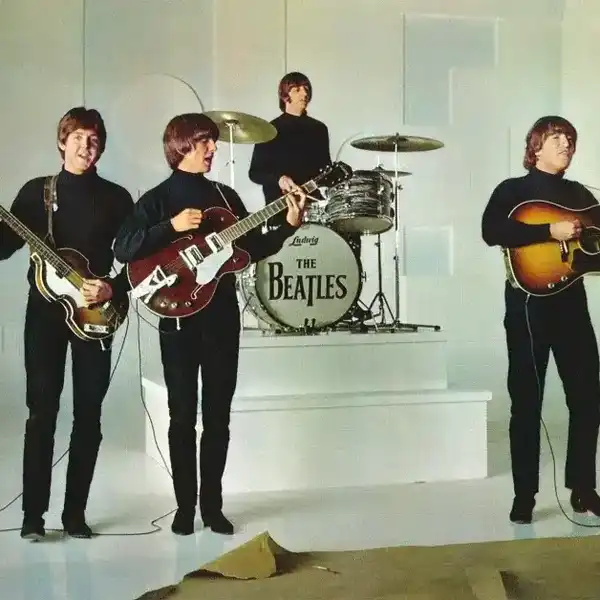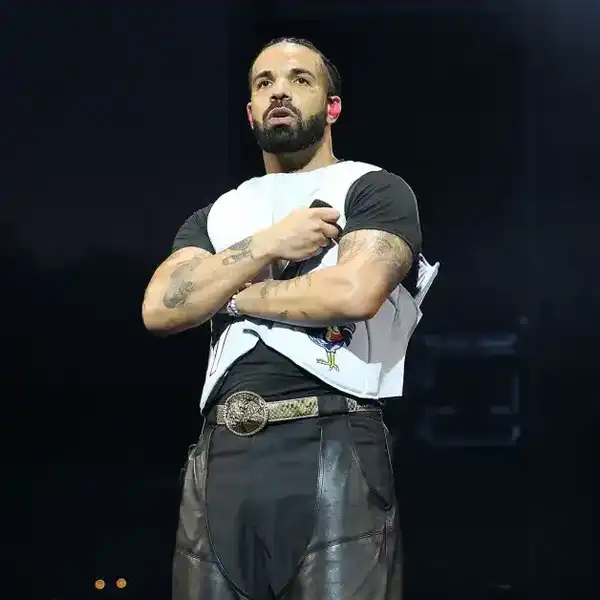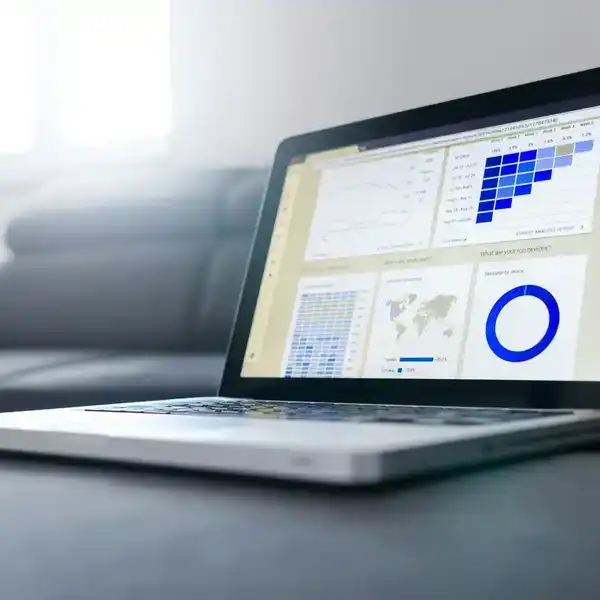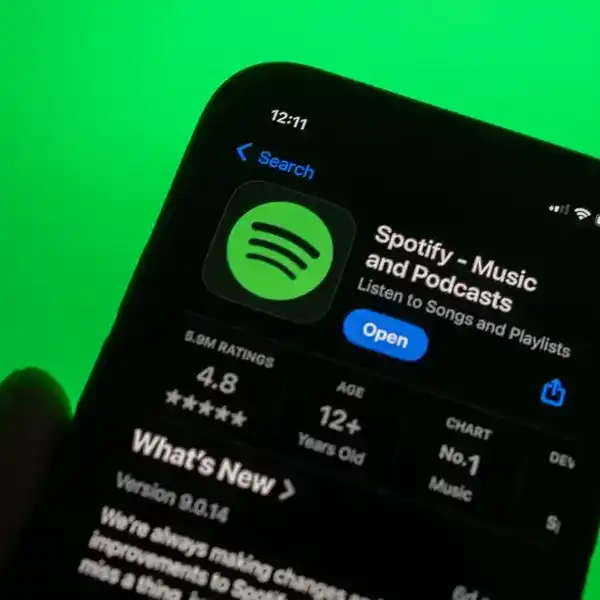Duff Roman: Career Milestones
Duff Roman is one of the most influential radio execs in Canada and his time with CHUM is well-documented. Here are some of the highlights of a career that began in 1955 and continues to this day.

By Nick Krewen
Duff Roman will be the first to admit he's led a charmed life. Here are a few of the highlights - things that worked...and some that didn't.
On organizing the secret 1977 Rolling Stones shows at Toronto's El Mocambo:
“April Wine were booked upstairs at the El Mocambo March 3 and 4, and we worked out a plan that the audience wouldn’t know they were going to see a Rolling Stones concert with April Wine’s Skippy Snair, El Mocambo owner Mike Baird ,and our own CHUM crew. We'd run an on-air contest on CHUM-FM, where we asked people – in 25 words or less – why they would like to party with The Rolling Stones. The prize was dinner for two at the El Mocambo with April Wine.
“We chartered some buses to transport contest winners and, on my bus, I tell them: ‘I have bad news – April Wine has had to cancel’, then the booing and hissing starts.
‘But, we worked very hard to find a replacement. You may have heard of them – the Strolling Bones.. er... Rolling Stones...' – people went into shock.
“The El Mo was cordoned off, and there are 325 people upstairs at overflow capacity. It’s magical and electric. The drum kit is sitting on the stage, and you could see Charlie Watts go over and test his trap and his sticks. It was unbelievable to be there.”
“It was such a best-kept secret, and nobody knew they were there. In fact, it was the Stones who leaked the announcement because they couldn’t believe that a band of their stature had pulled this off.”
“The next night, Spadina Avenue is flooded with police, and suddenly Margaret Trudeau decides to show up, something I didn’t know about. They’re talking about putting a sharpshooter on the roof of Grossman’s Tavern across the street and I’m doing a doubletake: ‘You’re going to shoot kids?'’ It turns out either Mick or Keith had called Margaret – and who knew that she would blow off her anniversary with Pierre Trudeau to party that weekend with the Stones? But she ended up being the wet blanket. Margaret would walk by, and Mick would roll his eyes. But there wasn’t a lot of partying happening because of the presence of the cops.
“Except for the (drug) bust of Keith Richards – it went off like clockwork. As a memento, I have a one-of-a-kind handmade poster designed and signed by all the Stones – to Duff Roman and Bob Wood, who was my colleague at CHUM – from all of the band.”
On his executive days with CHUM:
“There’s a cliché that says if you love the work you do, you never feel like you’ve worked a day in your life. And I’ve felt like that even to this day. I was doing what I wanted to do, grew from being lucky to getting into the work I wanted.
“I didn’t want to take on a morning show and become Wally Crouter or Jay Nelson. I wanted to be the puppet master and not the puppet. So, I took all the steps to rehabilitate myself to the next level.”
On inventing HOT AC Radio, then known as Adult Rock:
“I did some very heavy lifting for CHUM. In 1984, I was called down as a suit to fix CHUM-FM. Q107 was kicking the shit out of us with the Morning Zoo and Scruff Connors. And CHUM couldn’t go there. If you were going to do a morning zoo, you had to be edgy with double entendres. I analyzed the station and said, ‘you know what? Everybody is still under those stupid CRTC regulations.’ You either had to be rock, rock hard, rock harder or easy listening 70 % of the time. So, if you were Q107, you couldn’t soften up, even if you wanted to. If you were CKFM, you couldn’t harden up if you wanted to.
“I got CHUM-FM authorized at 50/50 – 50% rock and 50% soft. It allowed us to blend the music and create a new format – this basically invented Hot AC. We called it adult rock, in 1984 and went from #12 in the demos we wanted to sell to number 1 within three (ratings) books. That’s what got me to where I had the blessing of Allan Waters on most everything I wanted to do.
“So, in ’84, we hired Roger Ashby and Rick Hodge and Marilyn Denis and built the morning show. I brought in Rick Ringer. Did all the repositioning with the Big Chill-type commercials that said CHUM-FM has changed just a little. There’s been nothing like it.”
On why digital audio broadcasting didn’t work.:
“A lot of things came up roses for me, but I have one thing I’m proud of that was a big failure – trying to move radio into digital. I was the visible Canadian person for that, working with the CAB to bring in something called DAB – digital audio broadcasting. Essentially, with my urging, every station in Toronto had a digital signal back in the early ‘90s – pure digital, not HD radio, which is buried in the analogue signal – but in a special spectrum at the top of the CN Tower.
“You needed radios that were only being manufactured in Europe and imported car radios from Japan. The sound was fantastic. There was a data rate that would allow radio to have moving graphics on these special radios they have in Korea and Europe. Everybody loved it. We went as far as we could with it on both sides of the border. I was working with the National Association of Broadcasters, representing the Canadian Association of Broadcasters.
“The NAB executive committed to it and said that they were going to endorse it, but they needed a fly-in - which meant that the big decisions had to be done by the ownership. So, everybody flew their private planes to Washington and with them are guys in three-piece suits. These are not the guys who I’d been dealing with for about four or five years; these were the heavy hitters: the owners. I was introduced. I explained the concept – and then I realized that this was a hostile crowd.
“You see, with DAB in the L-Band, there is so much bandwidth that competitive radio stations have to share it in what are called ‘pods.’ There’s 1500 kHz in a pod, and a radio station only needs 300 kHz. So, you have five stations in a pod. That, to the Americans, is socialism. They’re thinking…there’s no way I’m sharing that. And the guys in the suits, who were either bankers or communication lawyers, said, ‘do you realize how much investment you have in those FM transmitter sticks you own? And those AM sites that require five, six, seven, eight towers on five acres of land? Are you people crazy?’
“Literally, in one afternoon, it was over. The only resolution they took was to find an American system that doesn’t change the status quo. And that’s what HD radio is: it’s FM radio with DAB stuck in the middle of it. Most Toronto radio stations now have it, but receivers are still scarce. But for me, that’s a change that should have happened much earlier in radio.”
On forming FACTOR:
“CHUM and other radio stations had commitments to support Canadian talent in those days, but they didn’t translate into records for airplay. Moffatt supported marching bands; Rogers was into home-grown recording contests. We pooled everything, and I think the pot was $140,000 in 1982. We would provide money for demos and 50% of the funds for artists to produce singles. We puttered along. We tried not to have them pass a litmus test. If they were working professionals and could put a business plan together, we’d divvy up as much money as we had.
“Then Gary Slaight – his father is Allan Slaight, who hired me at CHUM in 1965 – had something at Standard Radio called CTL, the Canadian Talent Library. That was a big deal – they produced recordings for Easy Listening Stations who weren’t getting any records through regular sources. So stations could buy this talent library. The big thing was that there was cash flow there even though those stations were dying off. It was becoming a bit of a white elephant for Gary, but he had a lot of money in the bank from these recordings. So, we talked and talked and three years later – 1985 – brought all that over to FACTOR. To do that, we agreed to hire the two people running CTL.: Jackie Rae, who was a former big-band leader and a World War Two Spitfire fighter pilot, and his assistant, Heather Ostertag, who later became president of FACTOR. So, we agreed to that. Ultimately, we realized that Heather was doing all the work, so we created a nice retirement party and plaque for Jackie that he deserved – and Heather came on as Executive Director. In the meantime, we had several erstwhile presidents – essentially some available record people. We realized Heather was still doing all the work, so at that point we made her President. Then we lobbied the government. By then, we had the private radio industry contributing money, so we asked the Feds about matching funds. Flora McDonald was the federal cabinet minister when FACTOR got its first Sound Recording Development contribution.
“I think it’s a sacred cow now. Nobody touches FACTOR. I think the success we have had with CanCon recordings is better than the success of our book industry and our movie industry. And I mean really making movies; not just the Ryan Reynolds and other Canadians who are living in Hollywood. We are a big success in that regard.”
On Dashboard Radio:
“When I was working on air in radio, broadcasting was the only mass medium. But now it’s all about technology competition - everything is taking your ears, taking your eyes – the iPhone, for god sake, no one’s carrying around a radio and an iPhone. You can’t even get wireless services to activate the chip on the phone to use the radio part. Now there’s streaming. When you hear iHeartRadio or Radioplayer being promoted by the radio stations, it’s all leading to what will happen in your car. If Wi-Fi is in the car, we will just be another Wi-Fi service - not an over-the-air service. So now you’ve opened it up to the whole Internet world. Now you can get radio stations from Denmark if you want on your car radio.
“So, what I want to see is, bring back the localism and the personality and when you first turn on your car, you should have the local radio icon first up on the screen - just like we do today on our car radios. When you start your car, the last station you were listening to comes on right away. So we have to stay accessible. Because if you have local disasters or emergencies – and who knows what’s going on with climate change, you want to be able to count on your reliable trusted local radio station. That radio station that has earned its place to be on your dashboard. So that’s why I think we need the “local” icon. Because radio could get lost if it takes one or two steps to get your local radio station. People will start searching and listening to streaming internet-only radio stations, and we may not get them back – and that’s worrisome to me.“


